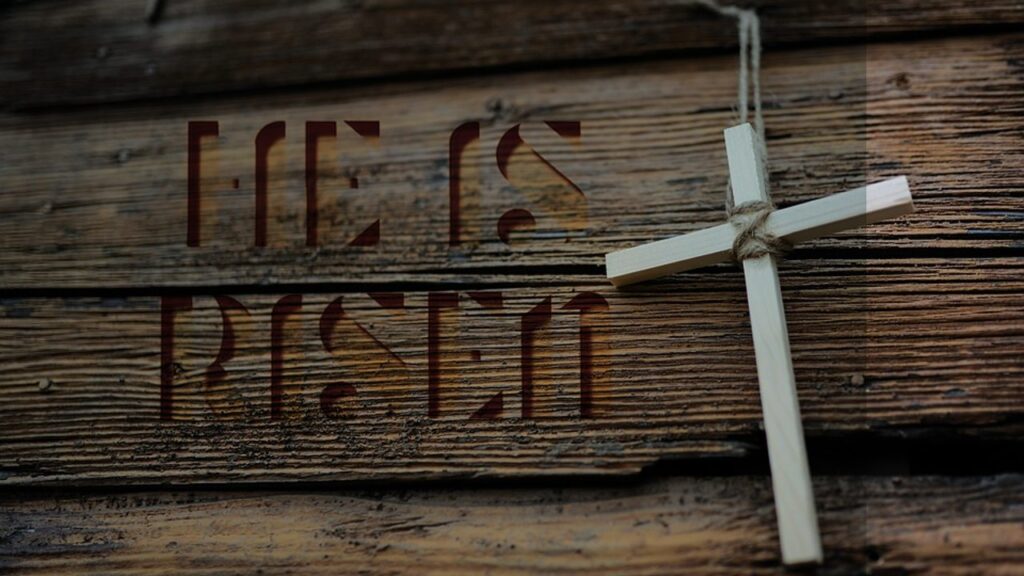By Demy P. Sonza

“Isn’t this the carpenter’s son? Isn’t his mother’s name Mary, and his brothers James, Joseph, Simon, and Judas? Aren’t all his sisters with us? Where then did this man get all these things?” And they took offense at him, but Jesus said to them,” A prophet is not without honor except in his own town and in his own home.”
Matthew 13:55-57
THE coming of the Son of God in human flesh and form is dramatically narrated in the Gospel of Matthew. When His mother, Mary, was betrothed to Joseph, she was found out to be pregnant with a child by the Holy Spirit.
A righteous man, Joseph did not want to disgrace Mary, so he thought of putting her away secretly. Before he could do that, however, an angel of the Lord spoke to him in a dream, saying :
Joseph, son of David, do not be afraid to take Mary home as your wife because what is conceived in her is from the Holy Spirit. She will give birth to a Son, and you are to give Him the name Jesus because He will save His people from their sins (Mark 1:20).
Joseph did as the angel told him. He took Mary as his wife and kept her a virgin until the birth of the Son, whom he named Jesus.
In the eyes of the neighbors and the community, Jesus was the son of Joseph. Joseph also acted as a good father to Jesus.
Then, Joseph and Mary had their own children after Jesus was born. They had four, namely, James, Joseph, Simon, and Judas, and at least two daughters (Matthew 13:35, Mark 6:3). It may also be noted that Luke 2:7 states, “And she gave birth to her firstborn, a son,” thus implying that Mary had subsequent sons or children.
Joseph was a carpenter, and he taught Jesus carpentry, which, presumably, He mastered.
Matthew referred to Jesus as a carpenter’s son, but Mark said that Jesus himself was a carpenter. (Mark 6:3).
With four brothers and two or more sisters, Jesus really had to help Joseph earn money to support the family.
Joseph died when most of his children were still small. As Mary’s eldest son, Jesus became the head of the family. He devoted His time to working as a carpenter to support His mother and siblings.
This explains “the eighteen silent years” in His life. Jesus did not start His public ministry until his brother James was mature enough to take over the responsibility of providing for the family.
Then, when he was about 30 years old, Jesus left Nazareth to look for John, His relative on the side of Mary. He found John baptizing people in the River Jordan, and John greeted Him, saying: “Look, the Lamb of God who takes away the sins of the world” (John 1:29).
Jesus told John that He had come to be baptized. John replied that he was not worthy to baptize Him, but Jesus insisted, saying that “it was fitting to do it to fulfill all righteousness.”
So, John baptized Jesus in the River Jordan, and as He came out of the water, the heavens opened, and the Spirit of God descended upon Him like a dove, and a voice was heard from heaven saying, “This is my Son, whom I love, with Him I am well pleased” (Matthew 3:17).
Having received affirmation of Sonship from the Father, Jesus went to the wilderness, where he stayed forty days in fasting and prayer. Satan’s temptation to dissuade Him from His mission utterly failed. Jesus was now ready to begin His public ministry.
He returned to Galilee and began to preach, saying to the people, “Repent, for the kingdom of heaven is near” (Matthew 4:17).
He recruited twelve disciples to assist Him, and they went around Galilee preaching, healing all kinds of diseases, and driving demons out of people.
News of His healing powers spread fast, and soon multitudes of people flocked to Him. But the scribes said that Jesus was possessed by Beelzebub, the ruler of demons.
When Jesus reached Nazareth, followed by a large crowd, His relatives and neighbors who were familiar with Him thought that Jesus had lost his senses (Mark 3:21).
Perhaps concerned about His safety, Mary and her other sons sought to talk with Jesus. They found Him preaching to a large crowd, and they sent word to Him to see them.
When told that His mother and brothers were looking for Him, Jesus said to His audience, “Who are my mother and brothers”? Gesturing to the people sitting around Him, He announced,
Here are my mother and my brothers! Whoever does God’s will is my brother and sister, and mother (Mark 3:33-34).
Not able to speak to Jesus, Mary and her other children returned home disappointed.
Yet, Jesus did not abandon His family. Whenever He could, He visited them. This is seen in John 7:1-5. Angered by Jesus’ activities in Judea, some Jews plotted to kill Him so He returned to Galilee. He went home to Nazareth and stayed with His family.
However, His brothers received Him with resentment for having left them and for refusing to talk to them when they wanted to. The four did not welcome home their eldest brother.
As John noted – For even His own brothers did not believe in Him (John 7:5).
Jesus was saddened by the rejection He met in Nazareth. He expressed His feelings, saying, “Only in his hometown, among his relatives and his own home, is a prophet without honor” (Mark 6:4).
It took the death and resurrection of Jesus for His brothers to realize who He really was.
After Jesus had risen from the dead, He showed Himself to Mary Magdalene, next to His disciples, and then to James, His brother (I Cor. 15:7).
That encounter with the Risen Jesus had a life-transforming impact on James.
Fully convinced that Jesus was the Messiah, James rushed to tell his siblings, and together, they hurried to seek their mother, who had been with the Apostle John since the crucifixion.
Reunited with their mother, they looked for Jesus and His disciples, and so they were with them on the day of Christ’s ascension.
After Jesus was lifted to heaven, the group returned to Jerusalem praising God. As Luke described it:
They all joined together constantly in prayer, along with the women and Mary, the mother of Jesus, and with His brothers (Acts 1:14).
The apostles elected James as the first moderator of the Jewish-Christian Church in Jerusalem.
According to Eusebius’ work “Ecclesiastical History,” there was a tradition that James was appointed the first bishop of Jerusalem by Jesus Himself. James presided at the First Council of Jerusalem in 48 A. D. that discussed the terms of admission of the converted Gentiles into the Church.
The main issue at the Council was whether to require Gentile converts to undergo circumcision before they could be admitted to the church. After hearing all arguments, James decided that circumcision should not be imposed on the Gentile converts, for salvation is by God’s grace through faith in Christ alone. Forthwith, James wrote the decree, which was promulgated by the Council and sent to the churches in Antioch, Syria, and Cilicia. (Acts 15:18-33).
Earlier, James wrote a letter addressed to “the twelve tribes scattered among the nations,” urging all believers in Christ to put their faith in action.
There are many striking parallelisms between James’ Epistle and Jesus’ Sermon on the Mount. Fifty-four practical commands are found in the 108 verses of James’ Epistle, that are included as the oldest book in the New Testament.
The historian Hegesippus referred to James as “James the Just” and characterized him as very zealous. Hegesippus wrote that James’ knees resembled that of a camel’s because the skin on his knees became thickly calloused from spending hours each day in prayer.
Like most of the first disciples of Jesus, James suffered martyrdom.
According to Josephus, a first-century historian, James was accused by the high priest Ananus and was condemned to death. The scribes and Pharisees demanded James publicly renounce his faith in Jesus.
But instead of denying Jesus, James “declared himself fully before the multitude and confessed that Jesus was the Son of God, our Savior, and Lord.”
At this point, his accusers began to stone James, who knelt and said. “I entreat Thee, Lord God our Father, forgive them for they do not know what they do.”
In the past. James distanced himself from Jesus, but as he died, he knew he was truly a spiritual brother of Jesus, bound to Him through faith and God’s spirit.
Another brother of Jesus by Mary was named Judas (Matt. 13:35, Mark 6:3). He probably became one of the prominent church members in Jerusalem, for he wrote a general letter to all Christians.
This letter is included as the second to the last book in the New Testament. Although he styled his name as Jude, he said that he was the brother of James and therefore was identified as the Judas among the siblings of Jesus.
We may surmise that he adopted the name, Jude since the name Judas was no longer fashionable because of what Judas Iscariot had done.
The canonicity of the Epistle of Jude was long disputed, but thank God it was finally established.
An early Greek theologian, Origen said of the epistle, “While it consists of but a few lines, yet, it is full of mighty words of heavenly grace.”
Furthermore, the epistle ends with “one of the most triumphant doxologies and tender benedictions to be found in the Scriptures.”
Jude’s letter ends thus,
To Him who is able to keep you from falling and to present you before His glorious presence without fault and with great joy — to the only God, our Savior be glory, majesty, power, and authority, through Jesus Christ our Lord, before all ages, now and forever more! Amen.
What happened to the two other brothers of Jesus, Joseph and Simon, and his sisters, we do not know.
Yet, it is safe to surmise that they, too, became faithful servants of Jesus, not as their elder brother, but as their Lord and Savior, the Son of God.

Demy P. Sonza
Known as a historian, author, public servant, and civic and church leader in Iloilo, Philippines.
He is a prolific writer of literary, historical, and social interests. Demy hails from Sta. Barbara, Iloilo. He was a former Vice-Governor of Iloilo Province.
This article was first published on Demy P. Sonza’s Facebook. Thank you, Manoy Demy, for permitting me to repost your write-up. Jonan



You are welcome, Jonan. By publishing this piece in your From Worry to Glory, the message will reach more people. To the Lord our God from whom all good gifts and blessings come be honor and glory. Best regards